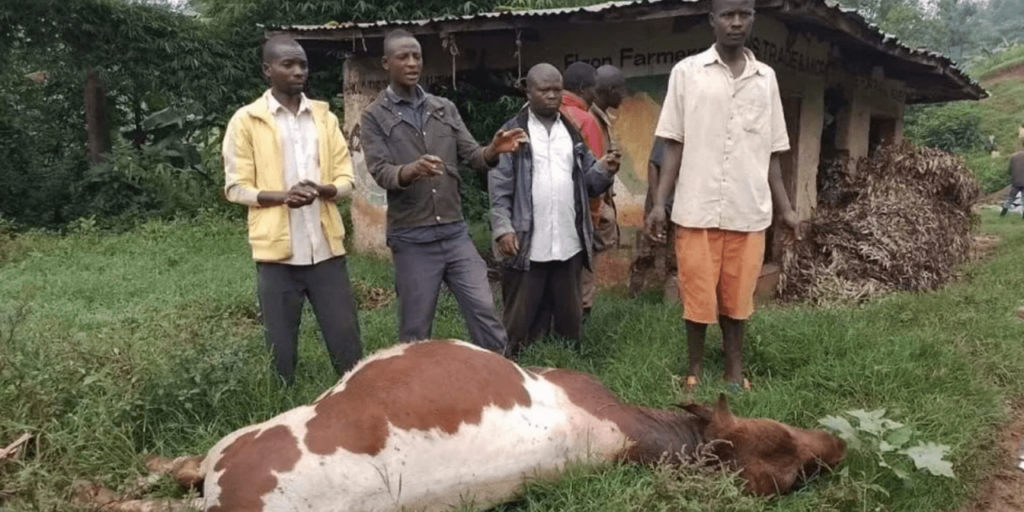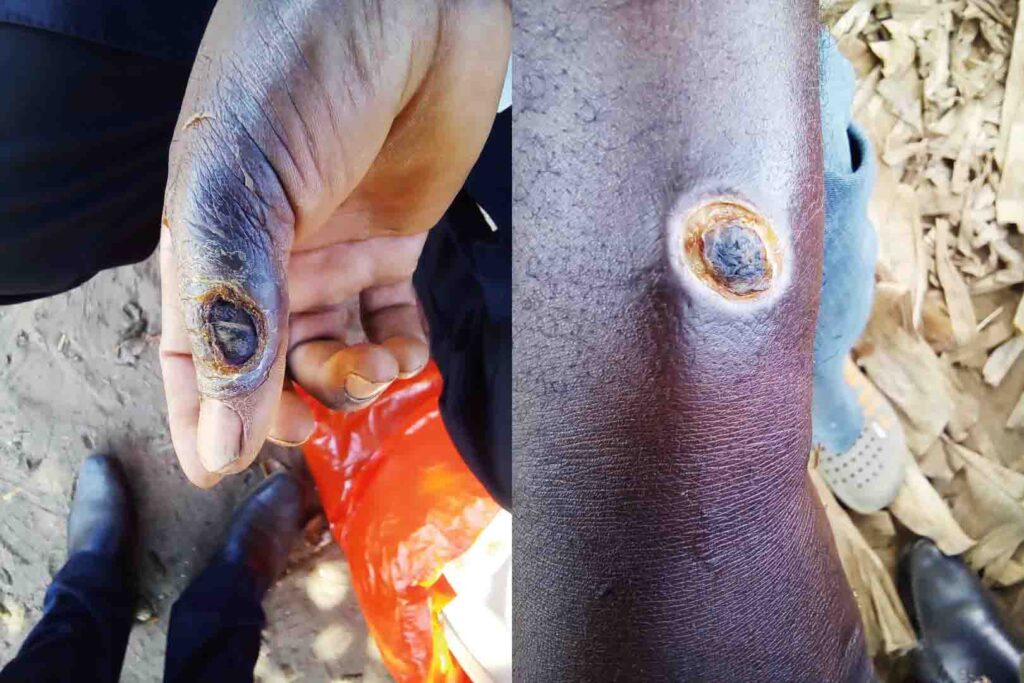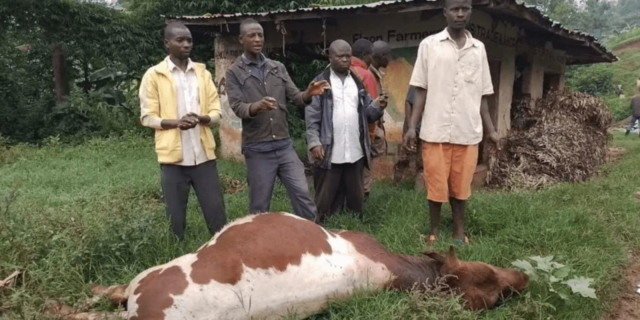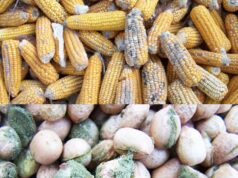By Agnes Kasemiire
Anthrax
Anthrax is endemic, which means that it is not a foreign disease, and it naturally occurs in most parts of Africa.
Case of Uganda
Anthrax outbreak was confirmed on November 29, 2023 in Kabira, Kasasa and Lwankoni sub-counties in Kyotera district, with the peak being in December during the Christmas season.
According to the district surveillance team in Kyotera district, anthrax started around June, 2023, on a farm in Kyamayembe Sub-County following the consumption of meat of a dead cow.
Following the outbreak, Uganda imposed a ban on the sale of beef products as authorities struggle to contain a severe anthrax outbreak in Kyotera district, central Uganda.
Reports indicate that at least three people died, and several others were bedridden in various local villages. More than 40 cows died within a period of two months.
The Kyotera district veterinary officer, John Mary Lutaaya, announced restrictions on the movement of cattle in the Kabira zone until the outbreak was under control. Her announcement affected local traders.
Between October, 2023, and January, 204, some cases of anthrax were recorded in Kazo and Ibanda districts.
According Dr David Muwanguzi, a senior public health veterinary officer at Ministry of Health, in 2022, about five cases of anthrax were reported in Budduda district.
That was after the occurrence of the landslides that washed away villages.
Dr Muwanguzi notes that for the last five years, Kween district has also been consistently registering cases of anthrax.
The disease was registered in Queen Elizabeth national park where about 200 hippopotamuses died.

How anthrax spread
Dr Muwanguzi, who doubles as an incident commander for zoonotic diseases, attributes the anthrax cases to cross-boarder movement of animals, especially the Pokot cattle keepers of Kenya, coming and grazing in Kween district.
Besides, when the animals die, the farmers sell their meat to the unsuspecting communities who later get infected.
The latest cases have been reported in Bukedea district, but Dr Muwanguzi says the situation is being contained and the cases are resolving.
Understanding anthrax
Anthrax is primarily a sporadic disease and the organisms, (bacteria Bacillus anthracis) that cause the anthrax spores are soil borne, which means they can stay in the soil for years.
Dr Muwanguzi says anthrax is primarily a disease people get from animals, the reason, it is called zoonosis, and it causes death.
Apart from cattle, anthrax also affects goats and sheep, although dogs and pigs are a little resistant to the disease.
Muwanguzi further says that what precipitates outbreaks of anthrax begins with something that distorts the soil, for example through landslides, floods or even excavations.
“When there is disturbance in the soil, the spores are exposed and when they get exposed. When animals consume or inhale spores as they graze, they fall sick,” he says.
Dr Henry Mulondo , the district veterinary officer of Kabarole district says spores are inactive or dormant stages of the anthrax bacteria.
Once taken in, they are activated and the bacteria start multiplying in the bodies of animals and human beings.
Mulondo explains that the disease takes a very short course, and sudden death of animals is the most common sign of the disease.
Once the animals die, they pass out blood through body openings mostly the ears, annual opening and through the nostrils.
How dangerous anthrax is to human beings
“Given the high poverty levels, people do not want to lose that meat, as such they end up eating the dead carcasses,” Muwanguzi explains.

Anthrax among people
In humans, anthrax normally manifests in three forms: firstly, where the wounds appear on the skin, secondly, where one inhales organisms called pulmonary anthrax, that manifests through signs of difficulty in breathing.
The third is the digestive one that manifests through abdominal pain and diarrhea.
“The source of anthrax is getting exposed to the organisms from animals. Therefore, the public is at risk of the infection through contact with infected animals or contaminated animal products, leading to symptoms such as blisters, fevers, swollen limbs, and difficulty in breathing,” Mulondo notes.
Muwanguzi says the most at risk are primary contacts, for example those who slaughter the dead animals and the meat handlers who distribute it to different places.
In the past, a case of someone who used the hide of an infected animal, was also reported.
Unlike other zoonotic diseases that only require supportive treatment for signs and symptoms, Dr Muwanguzi says the medication for anthrax is available.
Regardless, people are advised to stay away from infected animals and should not consume meat of animals that died of the disease.






















